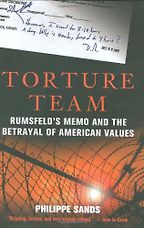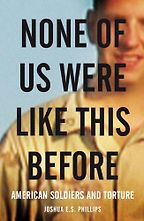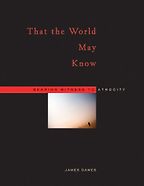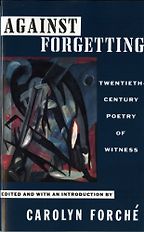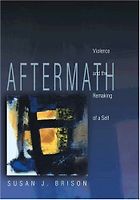Tell me about your first book, Torture Team: Rumsfeld’s Memo and the Betrayal of American Values by Philippe Sands.
This is a book about the genesis of a single memorandum authorising what I would call torture. It was called the Rumsfeld Memo and it was issued to the American military at Guantanamo in December of 2002; the draft was begun in October 2002 and Rumsfeld rescinded it in January of 2003. What is wonderful about this book is that it’s written like a detective mystery – how was this memorandum composed, how did people come to write a memorandum which authorised torture? But it also is a legal analysis that implicitly identifies and pins responsibility on different actors within the Bush administration.
It is written by a very sharp member of the Queen’s Council. I can’t imagine any of the Bush administration officials he interviewed knew QCs were among the elite of the barristers in Britain and, in Sands’s case, very knowledgeable in international law. Had they, they might never have talked with him. Nevertheless, they did.
So what happened to them during the interviews?
Well, what happened was that he recorded all of them on tape describing their roles in the production of the memorandum, and he pieced together how the memorandum was written, identifying who the principal players were. Once the book came out it created a sensation in Congress. You had the principals implicated in drafting this memo volunteering to testify before Congress to ‘clarify’ what they had said, which is unheard of for Bush administration officials when it comes to the torture question.
For me it is a very powerful book, both a really good read and a really insightful legal analysis. But, professionally speaking, and what is important for me, it is a really fine discussion about a well-known problem in the study of violence generally – which is ‘the problem of many hands’.
“Torture has a slippery slope and once you authorise it, or even create the atmosphere to encourage it, it rapidly runs out of control.”
Most violence today isn’t done by a single person. It is usually organised by many people and this enables them to take less responsibility for what they do. In this case we are looking at how actual agents higher up used bureaucracy to massage, intimidate, cajole and generally get lower-downs to do or say things they would not have originally set out to do. In the end the lower-downs end up taking the blame if things go wrong while the higher-ups walk away untainted. Sands’s book reverses all this, showing the complicity of the higher-ups.
Another point to remember is that Rumsfeld didn’t actually write the memo. The person who, according to the book, had primary responsibility for this was General Counsel for the Defence Department, William Haynes II. The book ends with Sands meeting Haynes and explaining his conclusions after which he is informed by the GC’s office that he may not refer to the conversations they had that day. I would say this book brought Haynes’s government career to an end and it makes clear that Haynes himself realised he was deeply vulnerable to future war crimes litigation.
Let’s move on to your next choice, None of Us Were Like This Before: American Soldiers and Torture by Joshua E S Phillips.
This book is a different kind of book entirely. It is the intersection of war journalism and human rights. It takes the story of a tank unit in Iraq: this was a tank unit that didn’t end up doing much fighting with tanks after the first few days of the war. The members of the unit were assigned to prison detail and, in the process, ended up doing terrible things which they didn’t tell anyone about.
And when they came back to the United States, one of the members, Sergeant Adam Gray, became a disciplinary problem wherever he was stationed, and he eventually committed suicide. Another one, Jonathan Millantz, an army medic, approached the author, a war reporter, and asked him to look into this matter. Eventually Millantz too committed suicide.
What emerged is that the unit had been immersed in torture and people were feeling guilty, and guilt is one of the most toxic emotions we know of, and whether you feel it is not in your power to control. In this way soldiers become a danger to themselves as well as, potentially, to others like their families. So it is a really important book on atrocity-related trauma and the blow-back effect from Iraq, as well as the importance of seeking help for these conditions as soon as possible.
There are many things in this book that are fascinating and generally unknown. One is that these soldiers were afraid to report what they had seen and done for fear of losing their military pensions, but without reporting it they couldn’t receive any medical help for their trauma. And so they were caught in that Catch 22 which is where torturers often find themselves.
And had the order for torture to do this come from above?
This is another very important feature of this story; there was no order in that sense. There was a sort of implicit understanding that you had to be tough and that is one of the points that the book makes and I think this is where my take comes in. One of the things that this book shows is that torture had begun in Afghanistan well before the memos were even drafted.
It also shows that torture in the US military was far broader and more extensive than torture in the CIA but it remains the least investigated part of the Bush era legacy. The book goes through all the ways the US military managed to evade allegations of torture within the army so it is a very good antidote to a myopic approach on memos, water-boarding and the CIA.
It also shows something that we all know, which is that torture has a slippery slope and once you authorise it, or even create the atmosphere to encourage it, it rapidly runs out of control. That happens for a number of reasons. For example, people who are tortured become desensitised to pain, the body can only take so much damage. Faced with the limits and variability of pain, torturers say, ‘I know I am only authorised to do seven techniques but what if I go beyond that? If I overtake his pain threshold I know I will be successful and it will be hard to blame me for success.’ So they begin to disregard the rules.
Another problem is they become competitive amongst themselves and each wants to be the one who breaks the victim, and this leads to a spiral of competitive brutality. Lastly, torture has a well-known deprofessionalisation effect – why would you want to learn the hard, hot work of a normal investigation when you have a bat? So all those reasons combined lead torture units to be less responsive to those who encourage them to torture. This book really shows how a situation can drive a unit that has no background at all in torture to start down a very dark road.
What about Aftermath: Violence and the Remaking of a Self by Susan J Brison?
Well, now we move away from the world of state torture to the world of rape.
This is a story of a female academic who goes jogging one day when she is on sabbatical in France. She is brutally attacked and left for dead in a ditch. Her assailant is captured and tried and she is a witness at the trial. In that sense it is a very simple story but the important thing is that the woman in question is Susan J. Brison, a Dartmouth Professor.
She is also a very trained and skilled philosopher who had at her disposal the full resources of her training – the resources of Western thought. And she describes in a way that I really appreciate both the experience of her breakdown and the experience of reconstituting herself in a way that I don’t see in a lot of personal trauma writing. In this case you could say that the philosophical becomes personal.
It is a very powerful book in which the essays are ordered in the way she wrote them so you get her raw emotion at the beginning and then see how she works through the process. For people like me who think they can think through everything, the encounter with violence is a very powerful thing because thought itself shatters in the face of it. And I think she captures this in a way I haven’t seen a lot of places.
Towards the end of the book she talks about the relationship between tragedy and time which reminds me of a book from my childhood James Thurber’s Thirteen Clocks. For those who have experienced violence, time stops and what sets time back in motion and allows you to live again is love, laughter and serendipity. Things that are not necessarily at hand to the victim of violence.
“For those who have experienced violence, time stops and what sets time back in motion and allows you to live again is love, laughter and serendipity.”
The other thing that is extremely moving about the book is that it shows that good is not all of a piece, evil is not all of a piece and self certainly is not all of a piece. And she talks about outliving yourself where you even experience the death of yourself in order to try and reconstruct a new one. So my first selection was on the organisation of violence, the second was on torturers and what happens to them, and this one is a deeply thought-provoking insight into the world of victims.
Where are we going with your next book, That the World May Know: Bearing Witness to Atrocity by James Dawes?
This one is a book about human rights workers and the world that they inhabit and it captures all the inner tensions that human rights work involves. Many of us who work in the human rights world know how many young people are frustrated with the world of ordinary life and its injustices and how much they want to change things. This book asks what the cost of that desire is. We all expect human rights workers to do good but Dawes shows the dark side of the world of human rights through a series of interviews with Red Cross workers, UN soldiers, refugee intake officials, and young activists.
We now live in a world in which we institutionally organise people to go out and stand by terrible events, genocide, famine and they are in many ways bystanders because their mandate does not allow them sometimes to intervene. So human rights workers experience secondary trauma and the book looks at the ways in which different types of workers try and deal with this. It deals with the kinds of narratives that they tell, the way that they move between betrayal and attachment.
Basically, human rights work seems to begin with caring for a human being and attachment, looking at what is available to solve this problem and it seems to end with a feeling of betrayal or cynicism. So how do people get up in the morning and carry on doing this work in light of this?
What I think is important about this book is that nobody had thought through the cost of having a world full of young people who go out and do this work. These young people, like soldiers too, live off cigarettes, sex and alcohol and the book looks at the impact this life may have on them. It is a short book that is written with a lot of empathy.
What leaps out for me particularly is how easy it is for the category of victim, violator and bystander to become interchangeable. So human rights workers who go out into the field and, say, do refugee work, confront people making refugee claims who might be lying. So all of a sudden the victim becomes a deceptive opponent. Then, when agents deny the refugee claim, refugees stalk them, so they become the victims and the refugees the violators!
“What leaps out for me particularly is how easy it is for the category of victim, violator and bystander to become interchangeable. ”
The book discusses, horrifically at one point, a refugee applicant in Turkey who takes his baby and throws it under a car in front of the human rights worker who wouldn’t give him refugee status. If we draw the world of violence in black and white we tend to miss the complexity of the world we live in. The book also draws attention to a vexing ethical paradox that all human rights workers must face, which is this: whoever puts cruelty first in one’s life and sets out to end it wherever one finds it, also makes himself vulnerable to deep misanthropy.
One comes to judge and dislike human beings, even victims, because one sees them as manipulative, whiney or infinitely needy. Confronting one’s own growing misanthropy is one of the most difficult ethical challenges that anybody who works in the field of human rights has to deal with.
What about your final book, Against Forgetting: Twentieth-Century Poetry of Witness which is edited by Carolyn Forché.
This is a completely different book. It is an edited collection of poetry of those who witnessed violence. It starts with the Armenian genocide and goes to the end of the 20th century and it covers poetry of witness from every major known and often obscure conflict that has happened around the world.
Carolyn Forché is a well-known poet who has had to drink very deeply from the well of sorrow and I respect that greatly because I do that too and I know how hard it is. What I think is very powerful about her book is that her selections are very morally surefooted. There are so many poems, and so much sadness, one can feel overwhelmed when one starts a project like this. But Forché takes to heart the idea that in Hades there is very little light except that which comes from your own story. If you don’t know your own story you get lost in the dark.
The poems bring together people who are about to go to their death, but who aren’t willing to give up their story and who leave behind testimony, whether it is Lorca’s last poem before they arrested him in the Spanish Civil War or Akhmatova’s wonderful four-line poem about the Stalin era, where she affirms how she is a witness to the common lot of those times and that place.
For people who are not familiar with the range of the poetry of witness, this is incredibly powerful reading, so powerful I read just a few pages each night. The book shows that even in the darkest moments, imagination remains alive. When I read this book, as someone who also writes poetry, I find in it a great cure for misanthropy because it focuses my attention on the grace of the living moment, no matter where it happens, and the thoughtfulness of a human being’s story. Even the people who have no hope of living have the power of witness and they know this.
July 28, 2010. Updated: October 3, 2022
Five Books aims to keep its book recommendations and interviews up to date. If you are the interviewee and would like to update your choice of books (or even just what you say about them) please email us at [email protected]
Five Books interviews are expensive to produce. If you've enjoyed this interview, please support us by donating a small amount.
